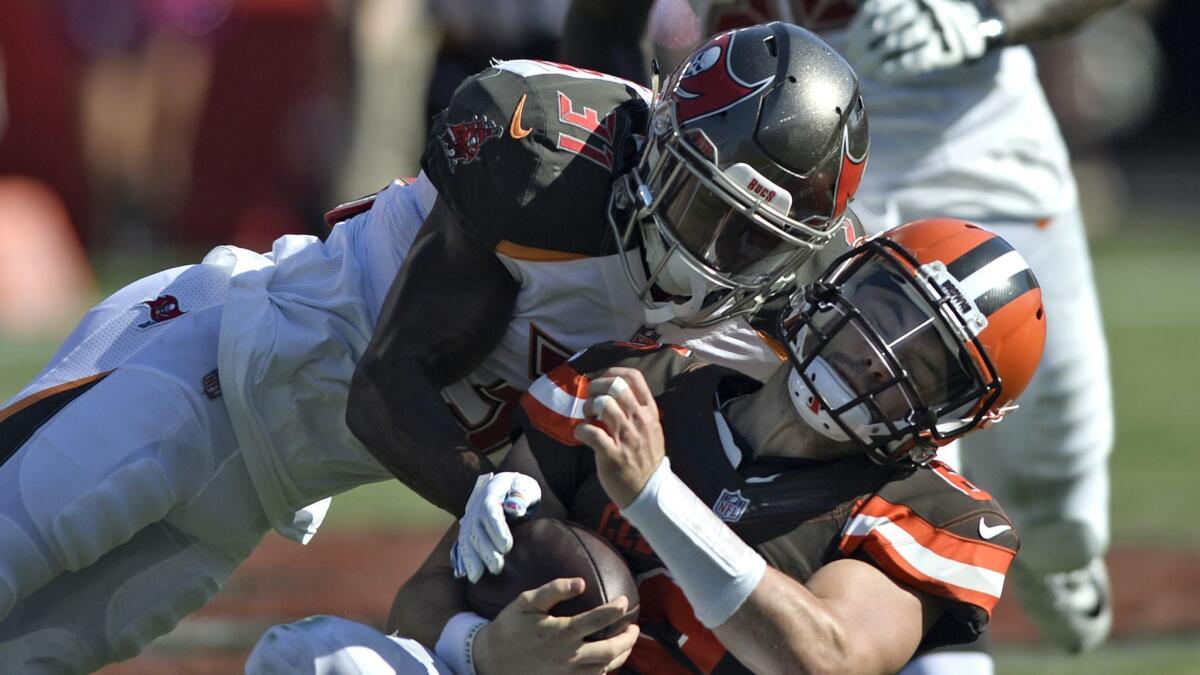Study finds at least 10% of NFL players could develop CTE

- Share via
At least 10% of NFL players could develop chronic traumatic encephalopathy, the devastating neurodegenerative disease linked to repeated head trauma, according to a study published this week in the journal Neurology.
“I think this is information that both NFL players and their loved ones deserve to know regarding the potential long-term risks of the sport,” said Kathleen Bachynski, a sports safety researcher at NYU Langone, who authored the paper with epidemiologist Zachary Binney from Emory.
Their work built on a study published last year that found signs of CTE in 110 of 111 brains of deceased NFL players examined by a group associated with Boston University. Since CTE can be definitively diagnosed only after death, players showing symptoms of the disease while alive could be more likely to donate their brains to be studied and skew projections of how many players actually have the disease.
“This form of selection bias could lead the study to overestimate the true prevalence of CTE among deceased NFL players,” the Neurology study said.
Bachynski and Binney compared the 110 brains with CTE from the previous study with the 1,142 NFL players who died while it ran from 2008 to 2016. That showed at minimum 9.6% of players who died had CTE.
If 50% of players with CTE donated their brains for the Boston University study, Bachynski and Binney found, that would raise the prevalence to 19.3% — even though those with CTE would be 461 times as likely to donate their brains as those without the disease.
“It’s pretty reasonable to think that the prevalence of CTE might even be higher than one in five,” Bachynski said. “And given that CTE doesn’t even encompass the full range of brain damage and other degenerative diseases associated with repetitive brain trauma … this doesn’t even represent the full scope of the risks to the brain that NFL players need to be aware of.”
The study notes the sample size of 111 brains is small — it also doesn’t include people who only played college football — and leaves open the possibility of updating the data as the number increases.
“Other key contextual facts, such as the percentage of participants with CTE neuropathy who exhibit neurologic symptoms while alive, also remain unclear,” the study said.
Twitter: @nathanfenno
More to Read
Go beyond the scoreboard
Get the latest on L.A.'s teams in the daily Sports Report newsletter.
You may occasionally receive promotional content from the Los Angeles Times.











